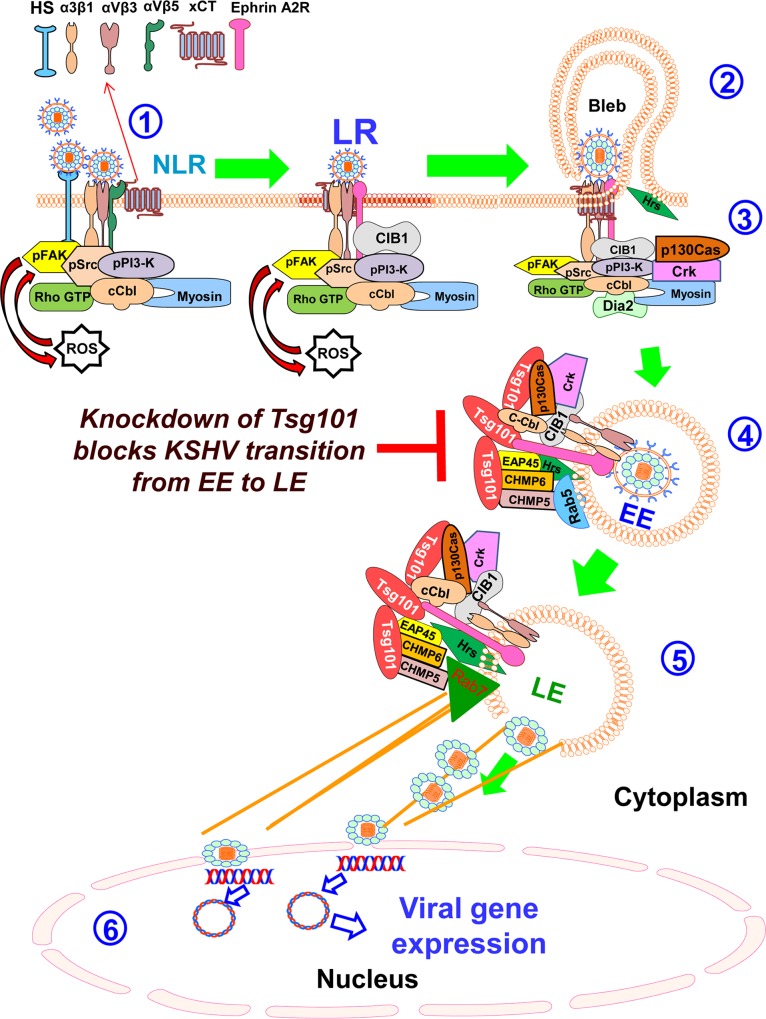Fig 11. Schematic model depicting the events of KSHV micropinocytosis in the endothelial (HMVEC-d) cells and the potential role of ESCRT-I Tsg101 molecule.
KSHV entry into HMVEC-d cells begins with (1) the virus attachment to the cell surface heparan sulfate followed by sequential interactions with α3β1, αVβ3 and αVβ5 integrins, and the CD98-xCT molecule, rapid induction of host cell FAK, Src, PI3-K, RhoGTP and ROS signal molecules, PI3-K mediated activation of cCbl which monoubiquitinates the α3β1 and αVβ3 integrins resulting in the rapid lateral translocation of virus-bound α3β1 and αVβ3 integrins into the lipid raft (LR) regions of the plasma membrane. LR translocated KSHV interacts with and activates LR-associated Ephrin A2 receptor tyrosine kinase (EphA2R), which results in the recruitment of the c-Cbl-integrin-myosin IIA light chain complex to the LR region and amplification of Src, PI3-K and c-Cbl activation and recruitment of CIB1-p130Cas-Crk molecules to EphA2R that are crucial for macropinocytosis. (2) The interaction of activated c-Cbl with myosin IIA leads to bleb formation and its retraction leading to macropinosome (early endosome) formation. (3) Simultaneously, EphA2R and CIB1-p130Cas-Crk coordinated signal amplification and cytoskeletal crosstalk results in the association with ESCRT-0 Hrs protein to the site of macropinocytosis, ROCK1 activation, and phosphorylation of NHE1, an intracellular pH-regulating protein, a local membrane pH change required for macropinocytosis. The present studies show the (4) sequential recruitment of ESCRT-I Tsg101 protein and several ESCRT I-III complex proteins on the early and late endosome. The Tsg101 molecule associates with the KSHV containing macropinosomes, and increased levels of Tsg101 associates/interacts with EphA2R, c-Cbl, p130Cas and Crk signal molecules, upstream and downstream ESCRT components Hrs (ESCRT-O), EAP45 (ESCRT-II), CHMP6 (ESCRT-III) and CHMP5 (ESCRT-III) in the KSHV infected cells, and early (Rab5) and late endosomal (Rab7) stages of KSHV intracellular trafficking. This also becomes the limiting step in KSHV’s transition from the early to late endosome in the absence of Tsg101 protein. (5) The KSHV lipid envelope membrane fuses with the endosomal membrane mediated by the viral glycoproteins and perhaps by other host proteins, to release the capsid and the enclosed viral genome into the cytoplasm. (6) Viral genome enters the nucleus and viral gene expression occurs with the help of KSHV infection induced host signaling molecules such as NF-kB, ERK1/2, and Nrf2 [66–68].

